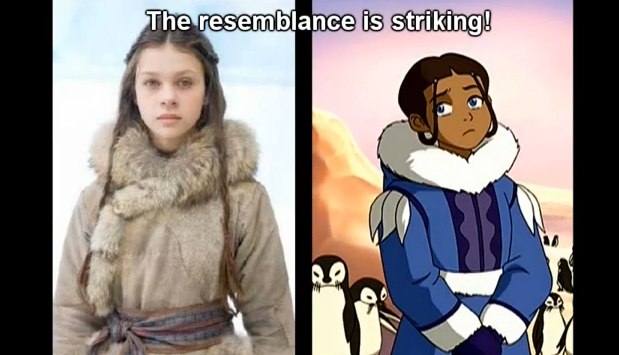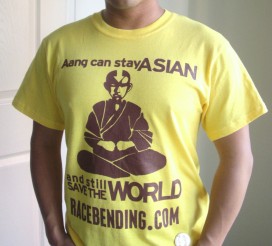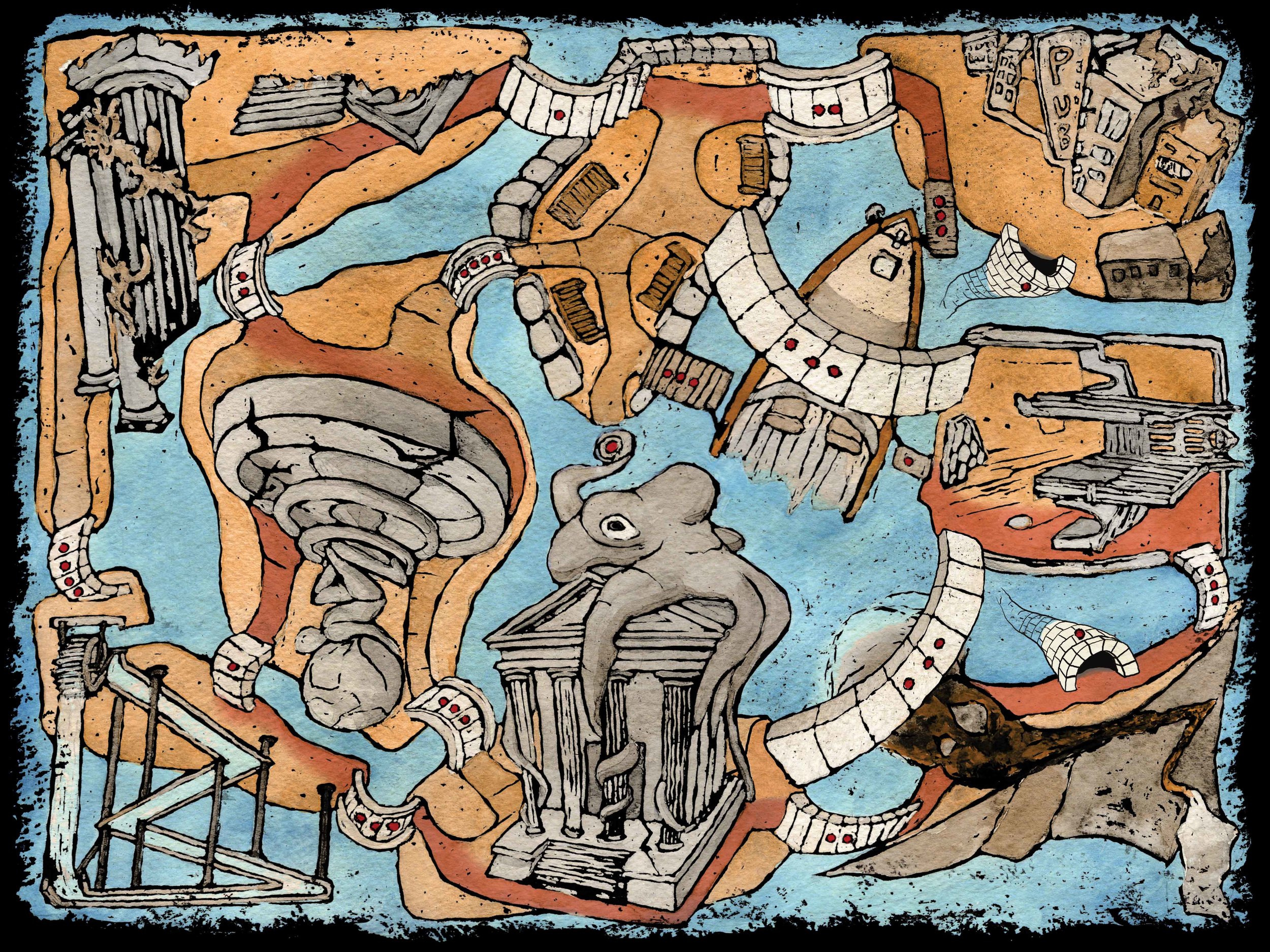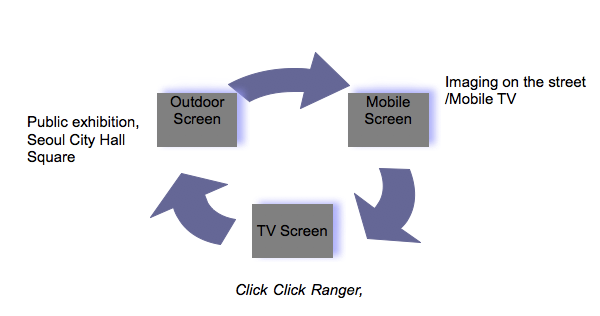I'm back at my desk after what was far too short a break! MIT gave us all of January off to focus on our own research as well as to participate in their Independent Activities Period. USC's semester starts, gulp, today, so my rhythms felt all wrong through late December and early January. But here we are -- once more into the breech.
Today, I am going to be teaching the first session of a graduate seminar on "Fandom, Participatory Culture, and Web 2.0," and so I wanted to share the syllabus with my readers here, given the level of unexpected interest I received when I posted my syllabi last fall for the Transmedia Storytelling and Entertainment and New Media Literacies classes. I am in a very happy place right now with my teaching -- starting over at USC is freeing me to form new kinds of classes which grow more from my own research interests rather than the institutional needs of sustaining an under-staffed program. I am thus developing classes around key concepts in my own work which are allowing me to introduce myself and my thinking to this new community. Surprisingly, given how central the study of fans has been to the trajectory of my research from graduate school forward, this is the first time I have ever taught a full class around this topic.
There are many ways you could conceptualize such a subject. A key choice I faced was between a course on fan culture, which would be centrally about what fans do and think, and a course in fan studies, which would map the emergence of and influence of a new academic field focused on the study of fandom and other forms of participatory culture. On the undergraduate level, I would have taken the first approach but on the graduate level, I opted for the second -- trying to map the evolution of a field of research centered around the study of fan communities and showing how it has spoken to a broader range of debates in media and cultural studies over the past two decades. As you will see, teaching a course right now, I found it impossible to separate out the discussion of fan culture from contemporary debates about web 2.0 and so I made that problematic, contradictory, and evolving relationship a key theme for the students to investigate. Do not misunderstand me -- I am not assuming an easy match between the three terms in my title. The shifting relations between those three terms is a central concern in the class.
I think it speaks to the richness of the space of fan research that I have included as many works as I have and I still feel inadequate because it is easy to identify gaps and omissions here -- key writers (many of them friends, some of them readers of this blog) that I could not include. Some of the topics I am focusing on are over-crowded with research and some are just emerging. I opted to cover a broader range of topics rather than focusing only on works which are canonical to the space of fan studies. All I can say is that I am sorry about the gaps but rest assured that this other work will surface in class discussion and no doubt play key roles in student papers.
I am hoping that in publishing this syllabus here, I can introduce some of the lesser known texts here (as well as the overall framework) to others teaching classes in this area and to researchers around the world who often write me trying to identify work on fan cultures. I'd love to hear from either groups here and happy to share more of what you are doing. Regular readers may anticipate more posts this semester in the fan studies space, just as last term saw more posts on transmedia topics.
COMM 620
Fandom, Participatory Culture and Web 2.0
Speaking at South by Southwest several years ago, I joked that "Web 2.0 was fandom without the stigma." By this, I meant that sites like YouTube, Flickr, Second Life, and Wikipedia have made visible a set of cultural practices and logics that had been taking root within fandom over the past hundred-plus years, expanding their cultural influence by broadening and diversifying participation. In many ways, these practices have been encoded into the business models shaping so-called Web 2.0 companies, which have in turn made them far more mainstream, have increased their visibility, and have incorporated them into commercial production and marketing practices. The result has been a blurring between the grassroots practices I call participatory culture and the commercial practices being called Web 2.0.
Fans have become some of the sharpest critics of Web 2.0, asking a series of important questions about how these companies operate, how they generate value for their participants, and what expectations participants should have around the content they provide and the social networks they entrust to these companies. Given this trajectory, a familiarity with fandom may provide an important key for understanding many new forms of cultural production and participation and, more generally, the logic through which social networks operate.
So, to define our three terms, at least provisionally, fandom refers to the social structures and cultural practices created by the most passionately engaged consumers of mass media properties; participatory culture refers more broadly to any kind of cultural production which starts at the grassroots level and which is open to broad participation; and Web 2.0 is a business model that sustains many web-based projects that rely on principles such as user-creation and moderation, social networking, and "crowdsourcing."
That said, the debates about Web 2.0 are only the most recent set of issues in cultural and media studies which have been shaped by the emergence of a field of research focused on fans and fandom. Fan studies:
- emerged from the Birmingham School's investigations of subcultures and resistance
- became quickly entwined with debates in Third Wave Feminism and queer studies
- has been a key space for understanding how taste and cultural discrimination operates
- has increasingly been a site of investigation for researchers trying to understand informal learning or emergent conceptions of the citizen/consumer
- has shaped legal discussions around appropriation, transformative work, and remix culture
- has become a useful window for understanding how globalization is reshaping our everyday lives.
This course will be structured around an investigation of the contribution of fan studies to cultural theory, framing each class session around a key debate and mixing writing explicitly about fans with other work asking questions about cultural change and the politics of everyday life.
By the end of the course, students will be able to:
- trace the history of fandom from the amateur press associations of the 19th Century to its modern manifestations
- describe the evolution of fan studies from the Birmingham School work on subcultures and media audiences to contemporary work on digital media
- discuss a range of theoretical framing and methodologies which have been used to explain the cultural, social, political, legal, and economic impact of fandom
- arbitrate the most common critiques surrounding the Web 2.0 business model
- situate fan practices in relation to broader trends toward social networks, online communities, and remix culture
- develop their own distinctive contribution to the field of fan studies, one which reflects their own theoretical and methodological commitments
Assignments:
- Students will be expected to post regular weekly comments reacting to the readings on the Blackboard site for the class. (20 percent)
- Students will write a short five-page autoethnography describing their own history as a fan of popular entertainment. You should explore whether or not you think of yourself as a fan, what kinds of fan practices you engage with, how you define a fan, how you became invested in the media franchises that have been part of your life, and how your feelings about being a fan might have adjusted over time. (15 percent) (Due on January 19)
- Students will develop an annotated bibliography which explores one of the theoretical debates that have been central to the field of fan studies. These might include those which we've identified for the class, or they might also include other topics more relevant to the student's own research. What are the key contributions of fan studies literature to this larger field of inquiry? What models from these theoretical traditions have informed work in fan studies? (20 Percent) (Due on Feb 23)
- Students will read Tim O'Reilly, "What is Web 2.0" [http://oreilly.com/web2/archive/what-is-web-20.html] and Tim O'Reilly and John Batelle, "Web Squared: Web 2.0 Five Years On" [http://assets.en.oreilly.com/1/event/28/web2009_websquared-whitepaper.pdf and write a five-page response which discusses what you see as the most significant similarities and differences between fan practice (as we've read about it in the class) and the business model associated with Web 2.0. (15 percent) (Due on April 6)
- Students will write a 10-15 page essay on a topic of your own choosing (in consultation with the instructor) which you feel grows out of the subjects and issues we've been exploring throughout the class. The paper will ideally build on the annotated bibliography created for the earlier assignment. Students will do short 10 minute presentation of their findings during final exam week. (40 percent) (Due on Last Day of the Class.)
Books:
Henry Jenkins, Fans, Bloggers, and Gamers: Exploring Participatory Culture. (New York: New
York UP, 2006)
Karen Hellekson and Kristina Busse, Fan Fiction and Fan Communities in the Age of the
Internet (Jefferson, NC: McFarland, 2006)
Jonathan Gray, Cornel Sandvoss, and C. Lee Harrington, Fandom: Identities and Communities in A Mediated World. (New York: New York UP, 2007)
Jean Burgess and Joshua Green, YouTube: Online Video and Participatory Culture (New York: Polity, 2009)
Seth, Wimbledon Green (Montreal: Drawn and Quarterly, 2005)
Hiroki Azuma, Otaku: Japan's Data Base Animals (Minneapolis: U of Minnesota P, 2009)
Stephen Duncombe, Dream: Reimagining Progressive Politics in an Age of Fantasy. (New York: New Press, 2007)
DAY 1
From Subculture to Fan Culture, From Fan Culture to Web 2.0
Screening: "Hey Watch This! Sharing the Self Through Media" (In-progress by Patricia Lange)
Recommended Reading:
Jonathan Gray, Cornel Sandvoss, and C. Lee Harrington, "Why Study Fans?" (Gray, Sandvoss, and Harrington)
Karen Hellekson and Kristina Busse, "Introduction: Works in Progress" (Hellekson and Busse)
DAY 2
Fan Studies and Cultural Resistance
Janice Radway "The Readers and Their Romances," Reading the Romance: Women, Patriarchy and Popular Literature (Chapel Hill: U of North Carolina P, 1984)
John Fiske, "The Cultural Economy of Fandom," in Lisa A. Lewis (ed.) The Adoring Audience: Fan Culture and Popular Media (New York: Routledge, 1992)
Camille Bacon-Smith, "Identity and Risk" and "Suffering and Solace," Enterprising Women: Television Fandom and the Creation of Popular Myth (Philadelphia: U of Pennsylvania P, 1992)
Constance Penley, "Feminism, Psychoanalysis, and the Study of Popular Culture" in Cultural Studies (edited by Lawrence Grossberg, Cary Nelson, Paula A. Treichler)
Henry Jenkins, "It's Not a Fairy Tale Anymore!': Gender, Genre, Beauty and the Beast," Textual Poachers: Television Fans and Participatory Culture (New York: Routledge, 1992)
Matt Hills, "Fan Cultures Between Community and 'Resistance'," Fan Cultures (New York: Routledge, 2002)
Recommended Reading:
Kathleen Rowe Karlyn, "Scream, Popular Culture, and Feminism's Third Wave: 'I'm Not My Mother," Genders Online Journal 38, 2003
Henry Jenkins, "Star Trek Rerun, Reread, Rewritten: Fan Writing as Textual Poaching," (Jenkins)
John Tulloch, "Cult, Talk and Audiences," Watching Television Audiences: Cultural Theories and Methods (London: Arnold, 2000)
DAY 3
Tracing the History of Participatory Culture
Robert Darnton, "Readers Respond to Rousseau: The Fabrication of Romantic Sensibility," The Great Cat Massacre And Other Episodes in French Cultural History (New York: Basic, 2009)
Paula Petrik. "The Youngest Fourth Estate: The Novelty Toy Printing Press and Adolescence, 1870-1886," in Elliot West and Paula Petrik (eds.) Small Worlds: Children and Adolescents in America, 1850-1950. (Kansas City: U of Kansas P, 1992)
Andrew Ross, "Getting Out of the Gernsback Continuum," Strange Weather: Culture, Science and Technology in the Age of Limits (New York: Verso, 1991).
Barbara Ehrenreich, Elizabeth Hess and Gloria Jacobs, "Beatlemania: Girls Just Want to Have Fun," in Lisa A. Lewis (ed.) The Adoring Audience: Fan Culture and Popular Media (New York: Routledge, 1992)
Recommended Reading:
Susan J. Douglas, "Popular Culture and Populist Technology: The Amateur Operators, 1906-1912," Inventing American Broadcasting, 1899-1922 (Baltimore: Johns Hopkins
UP, 1989)
Chad Dell, "Lookit That Hunk of a Man': Subversive Pleasures, Female Fandom and
Professional Wrestling," in Cheryl Harris and Anne Alexander (eds.) Theorizing
Fandom: Fans, Subculture and Identity (Cresskill, NJ: Hampton, 1998).
DAY 4
Fans and Online Community
Henry Jenkins, "Do You Enjoy Making the Rest of Us Look Stupid': alt.tv.twinpeaks, the
Trickster Author, and Viewer Mastery" (Jenkins)
Sharon Marie Ross, "Fascinated With Fandom: Cautiously Aware Viewers of Xena and Buffy," Beyond the Box: Television and The Internet (New York: Wiley-Blackwell, 2008).
Rebecca Lucy Busker, "LiveJournal and the Shaping of Fan Discourse," Transformative Works and Cultures 1, 2008
Alan Wexelblat, "An Auteur in the Age of the Internet: JMS, Babylon 5, and The Net" in Henry Jenkins, Tara McPherson and Jane Shattuc (eds.) Hop on Pop: The Politics and Pleasures of Popular Culture (Durham: Duke UP, 2002).
DAY 5
Fandom and Queer Studies
Kristina Busse, "My Life is a WIP on My LJ: Slashing the Slasher and the Reality of Celebrity and Internet Performances" (Hellekson and Busse)
Eden Lacker, Barbara Lynn Lucas, and Robin Anne Reid, "Cunning Linguists: The Bisexual Erotics of Words/Silence/Flesh" (Hellekson and Busse)
Richard Dyer, "Judy Garland and Gay Men," Heavenly Bodies: Film Stars and Society (London: McMillian, 1986)
Henry Jenkins, "Out of the Closet and Into the Universe" and "Normal Female Interest in Men Bonking" (Jenkins)
Recommended Reading:
Erica Rand, "Older Heads on Younger Bodies," Barbie's Queer Accessories (Durham: Duke UP, 1995).
Sean Griffin, "'You've Never Had a Friend Like Me': Target Marketing Disney to a Gay
Community," Tinker Bells and Evil Queens: The Disney Company From Inside Out (New York: New York UP, 2000).
DAY 6
Performing Fandom
Kurt Lancaster, "Welcome Aboard, Ambassador: Creating a Surrogate Performance with the Babylon Project," Interacting with Babylon 5 (Austin: U of Texas P, 2001)
Francesca Coppa, "Writing Bodies in Space: Media Fan Fiction as Theatrical Performance" (Hellekson and Busse)
Robert Drew, "Anyone Can Do It': Forging a Participatory Culture in Karaoke Bars," in Henry Jenkins, Tara McPherson and Jane Shattuc (eds.) Hop on Pop: The Politics and Pleasures of Popular Culture (Durham: Duke UP, 2002).
Sharon Mazer, "'Real' Wrestling, 'Real' Life" in Nicholas Sammond (ed.) Steel Chair to the Head: The Pleasures and Pain of Professional Wrestling (Durham: Duke UP, 2005).
Cornel Sandvoss, "A Text Called Home: Fandom Between Performance and Place," Fans (Cambridge: Polity, 2005)
Recommended Reading:
Nick Couldry, "On the Set of The Sopranos: 'Inside' A Fan's Construction of Nearness" (Gray, Sandvoss, and Harrington)
DAY 7
Fan Aesthetics; Fan Taste
Abigail Derecho, "Archontic Literature: A Definition, a History and Several Theories of Fan Fiction"(Hellekson and Busse)
Catherine Driscoll, "One True Pairing: The Romance of Pornography and the Pornography of Romance" (Hellekson and Busse)
Sheenagh Pugh, "What Else and What If," The Democratic Genre: Fan Fiction in a Literary Context (London: Seren, 2006)
Roberta Pearson, "Bachies, Bardies, Trekkies and Sherlockians" (Gray, Sandvoss, and
Harrington)
Jonathan Gray, "Anti-Fandom and the Moral Text: Television Without Pity and Textual
Dislike," American Behavioral Scientist 48(7), 806-22
Alan McKee, "Which is the Best Doctor Who Story?: A Case Study in Value Judgment Outside the Academies," Intensities 1, 2001
Recommended Reading:
Mafalda Stasi, "The Toy Soldiers from Leeds: The Slash Palimpsest" (Hellekson and Busse)
DAY 8
Vidders and Fan Filmmakers
Francesca Coppa, "Women, 'Star Trek' and the Early Development of Fannish Vidding," Transformative Works and Cultures 1, 2008.
Joshua Green and Jean Burgess, YouTube: Online Video and Participatory Culture (New York: Polity, 2009)
Louisa Ellen Stein, "This Dratted Thing: Fannish Storytelling Through New Media" (Hellekson and Busse)
DAY 9
Fans or Pirates?
Lawrence Lessig, "Two Economies: Commercial and Sharing," Remix: Making Art and
Commerce Thrive in the Hybrid Ecology (New York: Penquin, 2008)
Andrew Herman, Rosemary J. Coombe and Lewis Kaye, "Your Second Life?: Goodwill and the Performance of Intellectual Property in Online Digital Gaming," Cultural Studies 20, 2006
J.D. Lasica, "Inside the Movie Underground," "When Personal and Mass Media Collide,"
"Remixing the Digital Future," Darknet: Hollywood's War Against the Digital Generation (Hoboken: John Wiley and Sons)
Hector Postigo, "Video Game Appropriation through Modifications: Attitudes Concerning
Intellectual Property among Modders and Fan," Convergence, 2008.
Recommended Reading:
Rebecca Tushnet, "Copyright Law, Fan Practices, and The Rights of the Author" (Gray,
Sandvoss, and Harrington)
DAY 10
Collectors
John Bloom, "Cardboard Patriarchy: Adult Baseball Card Collecting and the Nostalgia for a Presexual Past," in Henry Jenkins, Tara McPherson and Jane Shattuc (eds.) Hop on Pop: The Politics and Pleasures of Popular Culture (Durham: Duke UP, 2002).
Chuck Tyron, "The Rise of the Movie Geek: DVD Culture, Cinematic Knowledge, and The Home Viewer," Reinventing Cinema: Movies in the Age of Media Convergence (Rutgers UP, 2009)
Seth, Wimbledon Green (New York: Drawn and Quarterly, 2005)
Mary DesJardin, "Ephemeral Culture/eBay Culture: Film Collectables and Fan Investments," Ken Hillis, Michael Petit, and Nathan Scott Epley (eds.), Everyday eBay: Culture, Collecting and Desire (New York: Routledge, 2006)
DAY 11
Fan Labor, Moral Economy, and the Gift Economy
Joshua Green and Henry Jenkins, "The Moral Economy of Web 2.0: Audience Research and Convergence Culture," in Jennifer Holt and Alisa Perren (eds.) Media Industries: History, Theory and Method (New York: Wiley-Blackwell, 2009)
Tiziana Terranova, "Free Labor," Producing Culture for the Digital Economy (Pluto, 2004)
Suzanne Scott, "Repackaging Fan Culture: The Regifting Economy of Ancillary Content
Models," Transformative Works and Cultures 3, 2009
Lewis Hyde, "The Bond" and "The Gift Community," The Gift: Creativity and The Artist in the Modern World (New York: Vintage, 2008)
Mark Andrejevic, "Exploiting YouTube: Contradictions of User-Generated Labor," in Pelle Snickars and Patrick Vonderau (eds.) The YouTube Reader (Stockholm: National Library of Sweden)
DAY 12
Produsers and Lead Users
John Banks and Mark Deuze, "Co-Creative Labor," International Journal of Cultural Studies 12(5), 2009
Darren Brabham, "Crowdsourcing as a Model for Problem Solving: An Introduction and Cases," Convergence, 2008.
Axel Bruns, "The Key Characteristics of Produsage," Blogs, Wikipedia, Second Life and Beyond: From Production to Produsage (London: Peter Lang, 2008)
Sam Ford, "Fandemonium: A Tag Team Approach to Enabling and Mobilizing Fans,"
Convergence Culture Consortium White Paper, 2007
Recommended Reading:
Stephen Brown, "Harry Potter and the Fandom Menace," Bernard Cova, Robert Kozinets, and Avi Shankar (eds.) Consumer Tribes (Oxford and Burlington, MA: Butterworth-Heinemann, 2007)
Eric Von Hippel, "Development of Products by Lead Users," Democratizing Innovation (Cambridge: MIT Press, 2006)
DAY 13
Learning Through Fandom
Lauren Lewis, Rebecca Black, and Bill Tomlinson, "Let Everyone Play: An Educational
Perspective on Why Fan Fiction Is, or Should Be, Legal," International Journal of
Learning and Media 1(1), 2009
Patricia G. Lange and Mizuko Ito, "Creative Production," Hanging Out, Messing Around, and Geeking Out: Kids Living and Learning with New Media (Cambridge: MIT Press, 2010)
Erica Rosenfeld Halverson and Richard Halverson, "Fantasy Baseball: The Case for Competitive Fandom," Games and Culture 3(3-4), 2008
Henry Jenkins, "How Many Star Fleet Officers Does It Take to Screw in a Light Bulb: Star Trek at MIT," Science Fiction Audiences: Watching Dr. Who and Star Trek (London: Routledge, 1995)
Jason Mittell, "Sites of Participation: Wiki Fandom and The Case of Lostpedia," Transformative Works and Cultures 3, 2009
DAY 14
Fan Activism
Steven Duncombe, Dream: Reimaginaing Progressive Politics in an Age of Fantasy (New York: New Press, 2007)
Henry Jenkins, "How Dumbledore's Army is Transforming Our World: An Interview with HP Alliance's Andrew Slack," Confessions of an Aca-Fan, July 23 2009
Derek Johnson, "Enfranchising the Consumer: Alternate Realities, Institutional Politics, and the Digital Public Sphere," Franchising Media Worlds: Content Networks and the Collaborative Production of Culture, diss., University of Wisconsin-Madison, 2009
Henry Jenkins, "How Slapshot Inspired a Cultural Revolution (Part One): An Interview with the Wu Ming Foundation", Confessions of an Aca-Fan, October 5 2006
DAY 15
Global Fans
Henry Jenkins, "Pop Cosmopolitanism: Mapping Cultural Flows in the Age of Media
Convergence" (Jenkins)
Nancy K. Baym and Robert Burnett (2009). "Amateur Experts: International Fan Labor in Swedish Independent Music." International Journal of Cultural Studies. 12(5): 1-17
Xiaochang Li, "New Contexts, New Audiences," Dis/Locating Audience: Transnational Media Flows and the Online Circulation of East Asian Television Drama, Unpublished Master's Thesis, Comparative Media Studies, MIT, 2009
Hiroki Azuma, Otaku: Japan's Data Base Animals (Mineappolis: U of Minnesota P, 2009)
Aswin Punathambekar, "Between Rowdies and Rasikas: Rethinking Fan Activity in Indian Film Culture" (Gray, Sandvoss, and Harrington)

![Reblog this post [with Zemanta]](http://img.zemanta.com/reblog_e.png?x-id=1a1ecca7-cede-4c4f-a48b-d9d0ae1e71a2)

![Reblog this post [with Zemanta]](http://img.zemanta.com/reblog_e.png?x-id=e3038901-49a5-4647-98fc-a7e6255949ea)


![Reblog this post [with Zemanta]](http://img.zemanta.com/reblog_e.png?x-id=7b7b43e7-c1a2-4001-bada-efc82508d276)
![Reblog this post [with Zemanta]](http://img.zemanta.com/reblog_e.png?x-id=91bbb21f-52c0-4293-a57b-4218a799a45b)




























